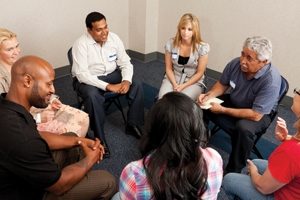Lead Your Team through the Profile, Part 5: Checklist for Communicating
How Your Team Can Use Words to Build Up, Not Tear Down
This exercise is part of a series to use as you guide your team through understanding their LFYS profiles.
For You To Think About
“Death and life are in the power of the tongue” (Proverbs 18:21, ESV).
Good communication can be a powerful asset in building your team and breathes life into the work you do together. And as you probably know, poor communication can tear a team apart, damage relationships, and destroy the work you’re trying to accomplish.
Most people are not surprised to learn that each team member is wired to communicate differently.
What surprises them is how differences in communication bring strength to the team. As team members find out how others are wired to receive information, they can make small adjustments in how they communicate. In customizing their communication with each other, they breathe life into the team rather than destroy it.
For You To Do
This exercise helps your team members discover how to communicate well with each other. Together, your team will process the “Checklist for Communicating ” and “Don’ts in Communicating” sections from their LFYS profiles.
This section of the profile reveals the ways the user best receives information and what can prevent him from receiving information. Statements listed in this section are neither inherently good nor inherently bad, but rather simply indicate communication style. By looking at these statements, members can better understand what to do and what not to do when communicating with others on the team.
What You Need for This Exercise
- Each participant’s profile report
- Highlighters, pens, and pencils for each participant
- Copies of “Communicating with Others“ for each participant
What To Do
Ask the group to sit in a circle.
- Have participants refer to the “Checklist for Communicating” and “Don’ts in Communicating” sections of their LFYS profiles. Have them use a highlighter, pen, or pencil to select 3 statements from each list that best describe them.
- Process the data together in this way.
A. Ask the person on your left to begin. Invite that team member to share the first statement he selected and explain why he chose it. Ask the team member to clarify terms or words that may have more than one meaning.
B. Ask the group to respond and give examples that affirm the statement. How have they communicated with this team member in the past in a way that reflects the statement? How does this person’s approach to communicating add strength to the team?
- Move on to the next person and repeat Steps A and B. Continue the process until everyone on the team has shared one statement. Repeat the process until each participant has shared all of their selected statements.
- Invite participants to review the “Communicating with Others” handout. Encourage them to use it as a quick reference tool to equip them to communicate well with others on the team. Have participants identify which approach best fits each member of the team.
- Ask, “What surprised you the most during this exercise?” Allow participants to share.
For You To Take Away
Death and life are in the power of the tongue. (Proverbs 18:21, ESV)
More Exercises to Help You Use the Profiles
Lead Your Team Through the Profile, Part 1: Group Devotional
Lead Your Team Through the Profile, Part 2: Understand Differences
Lead Your Team Through the Profile, Part 3: My Strengths, Your Strengths, Our Strengths
Lead Your Team Through the Profile, Part 4: What Value Do You Bring to Your Team?

